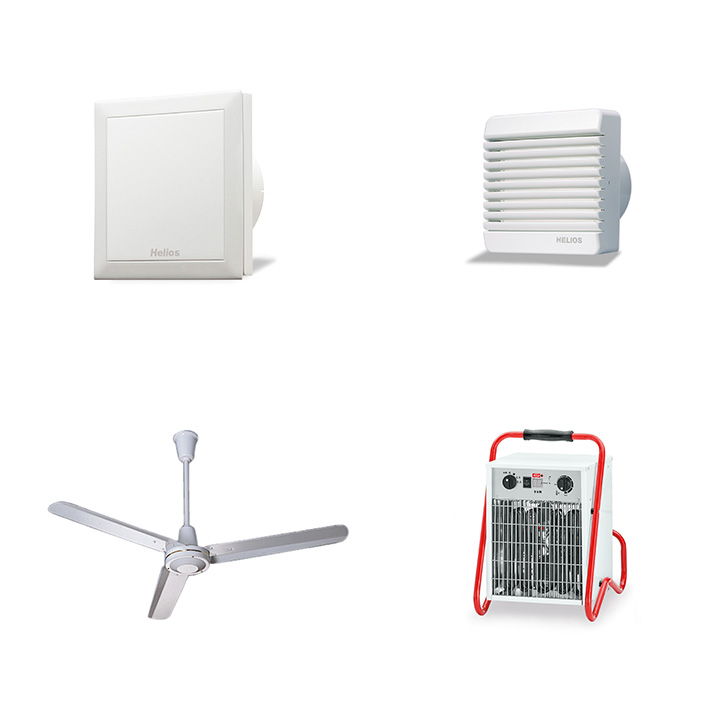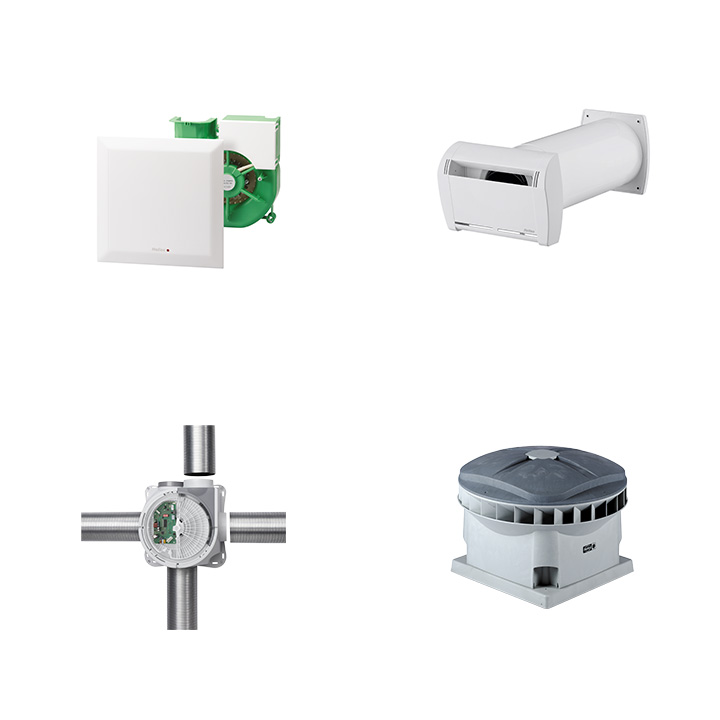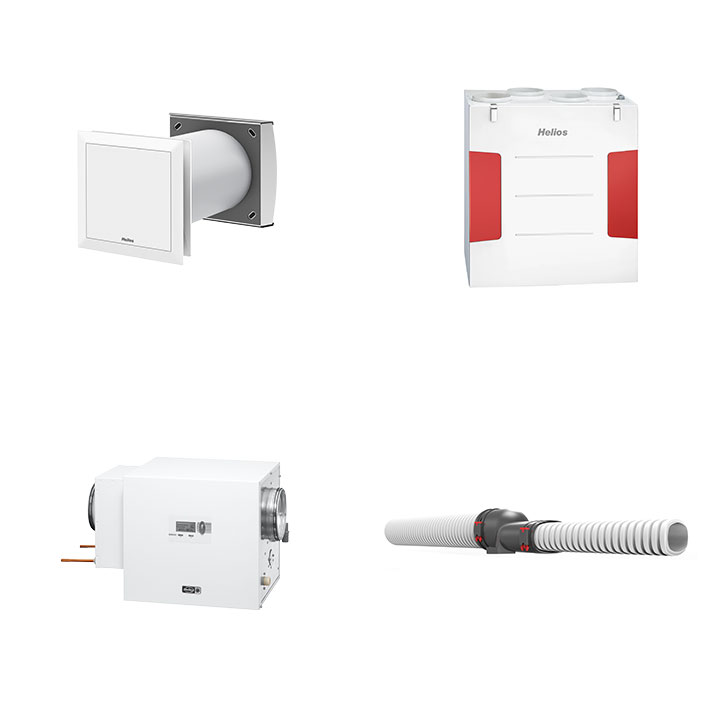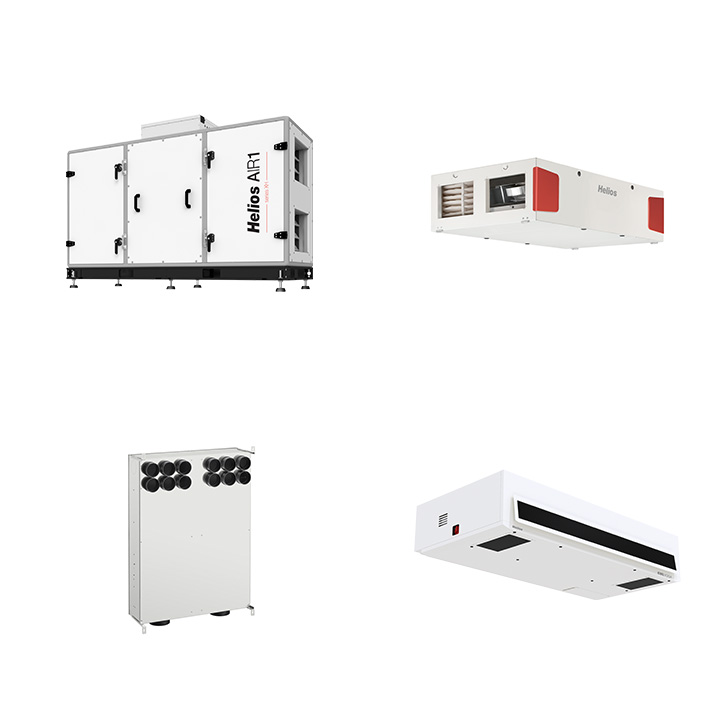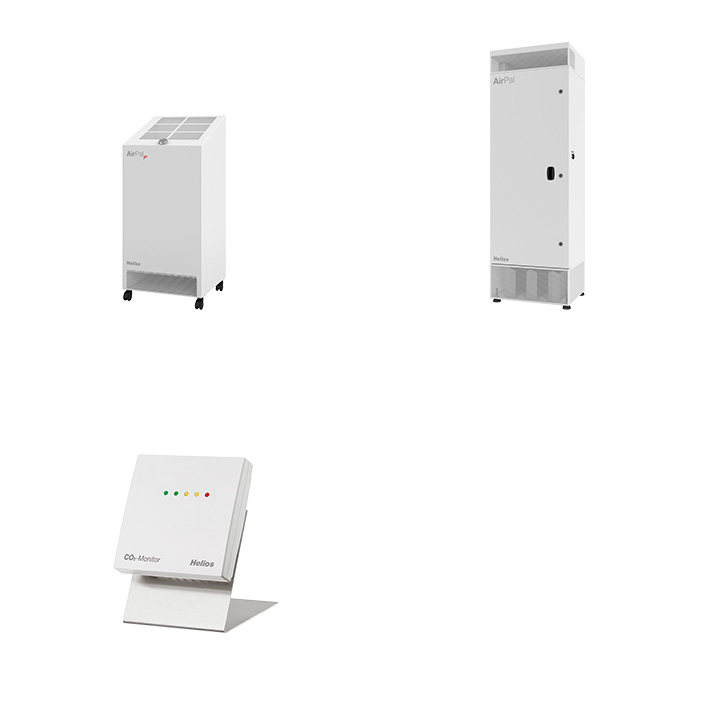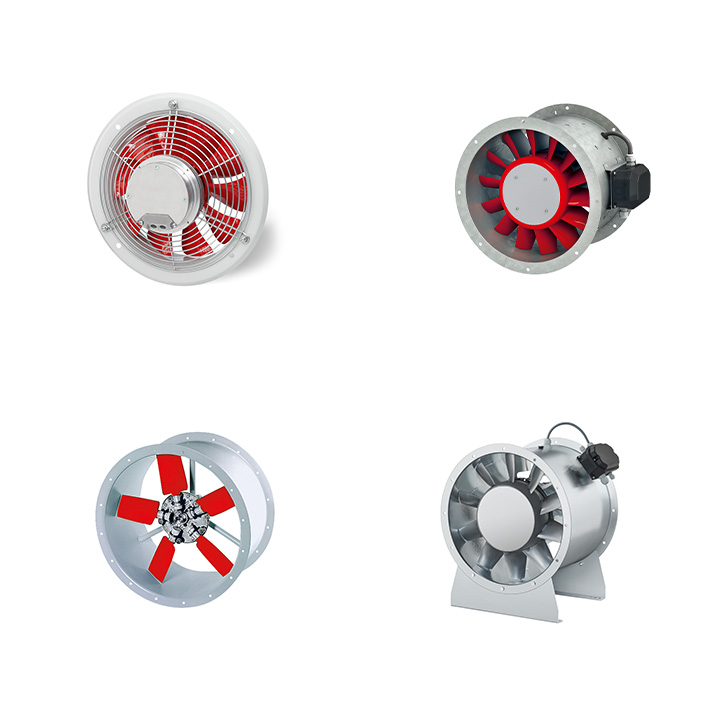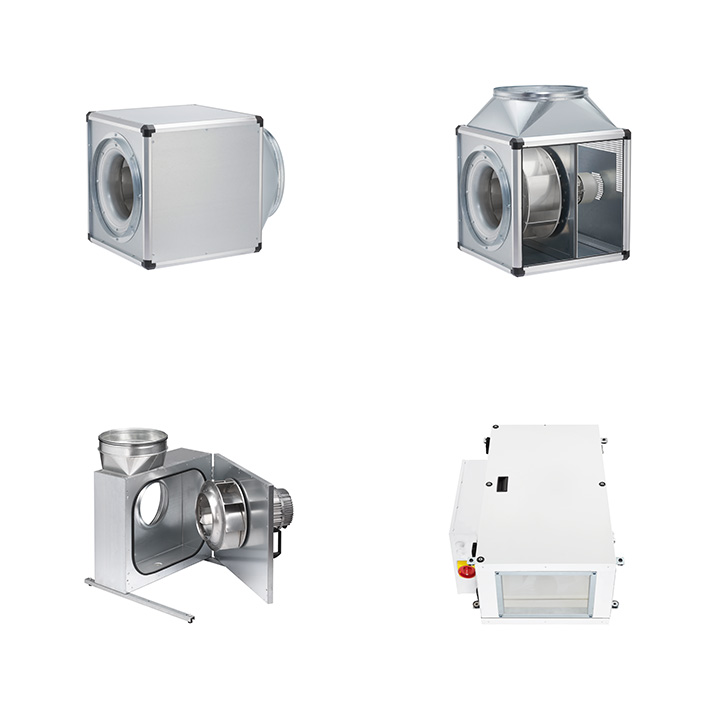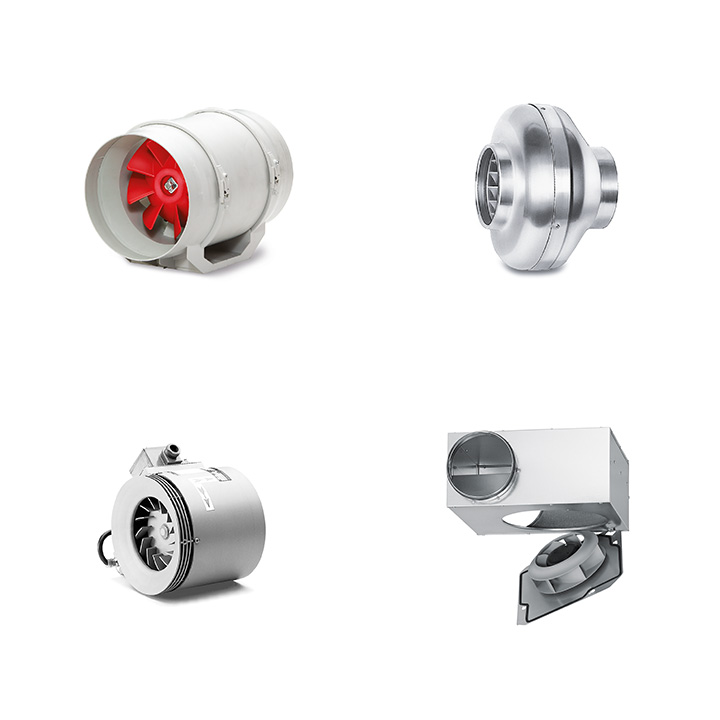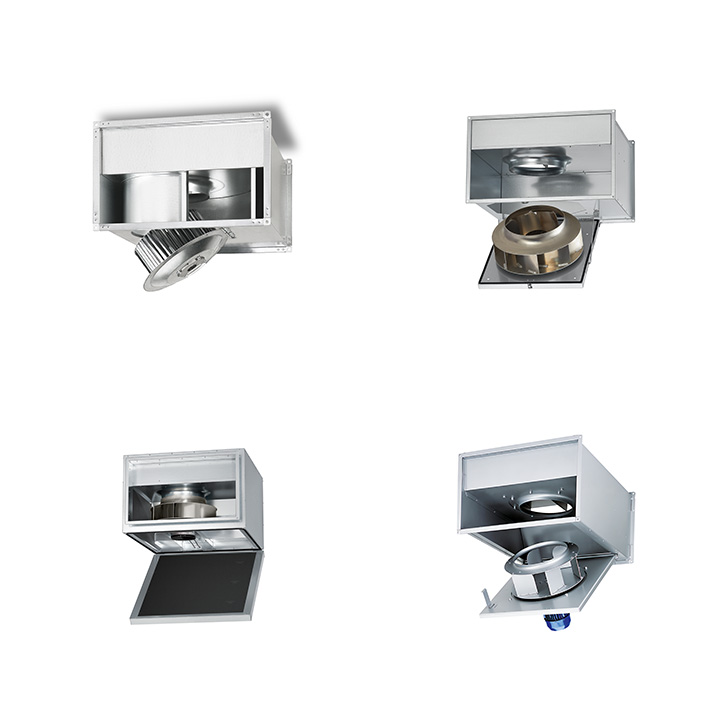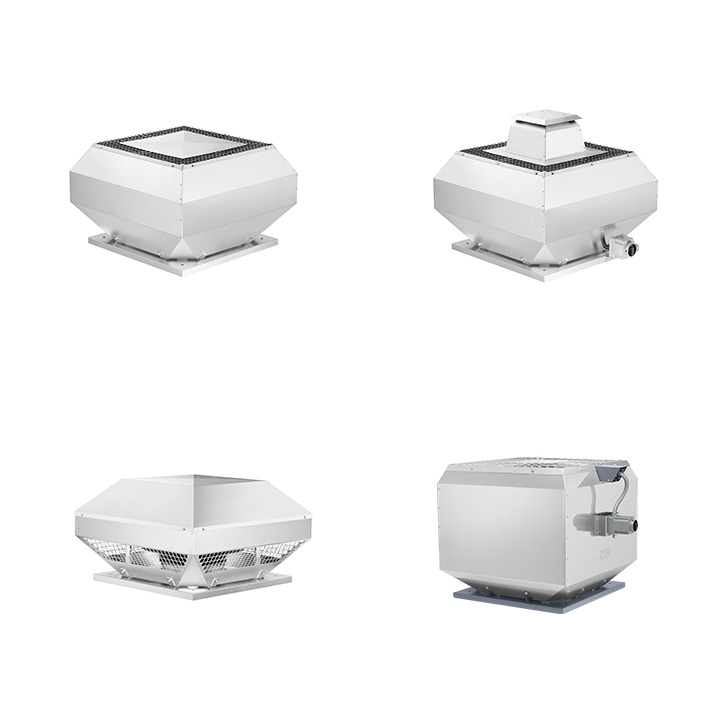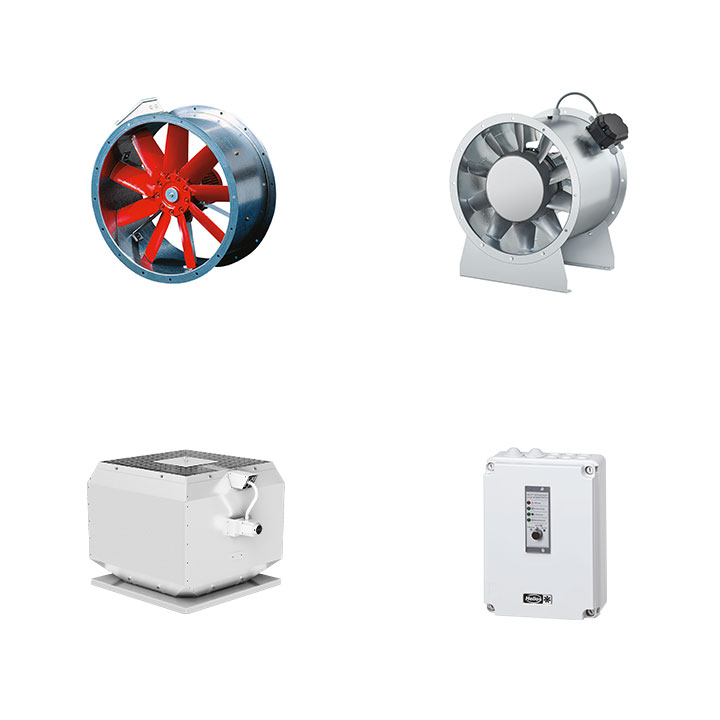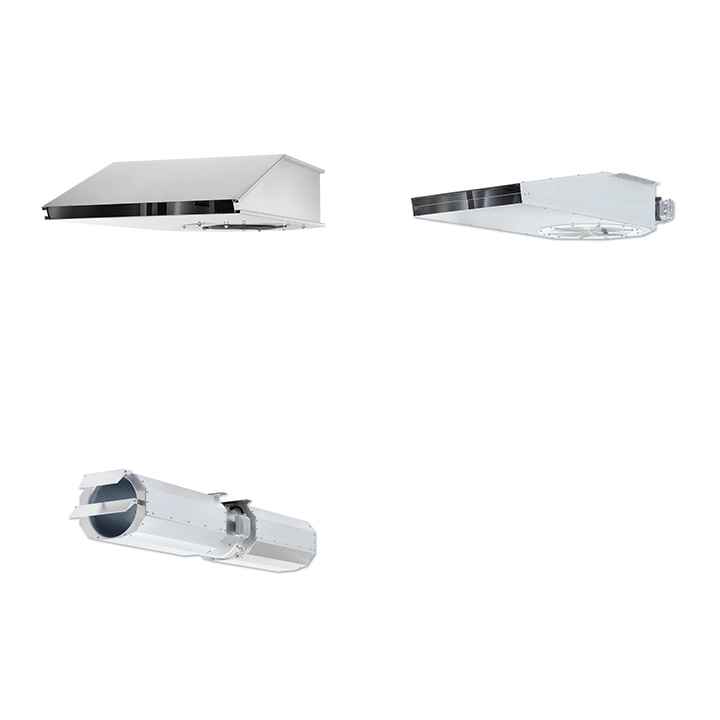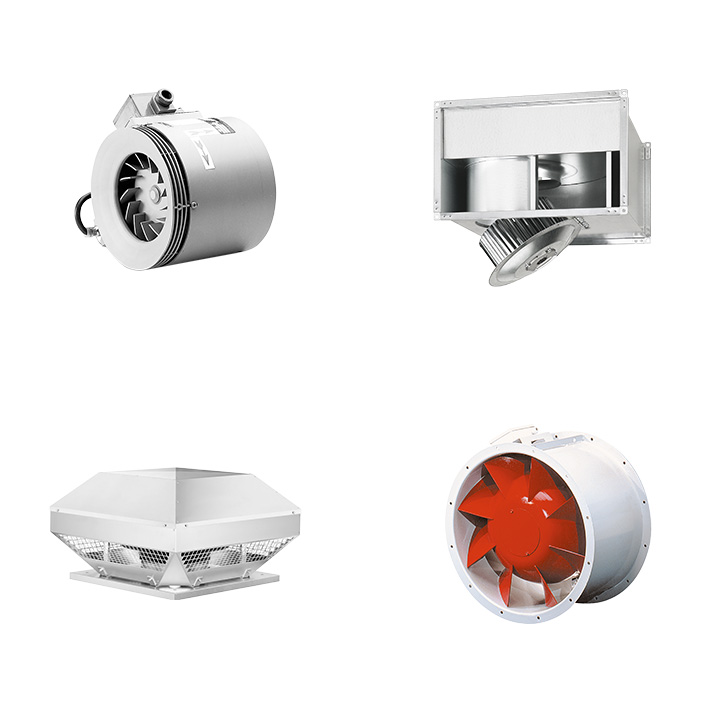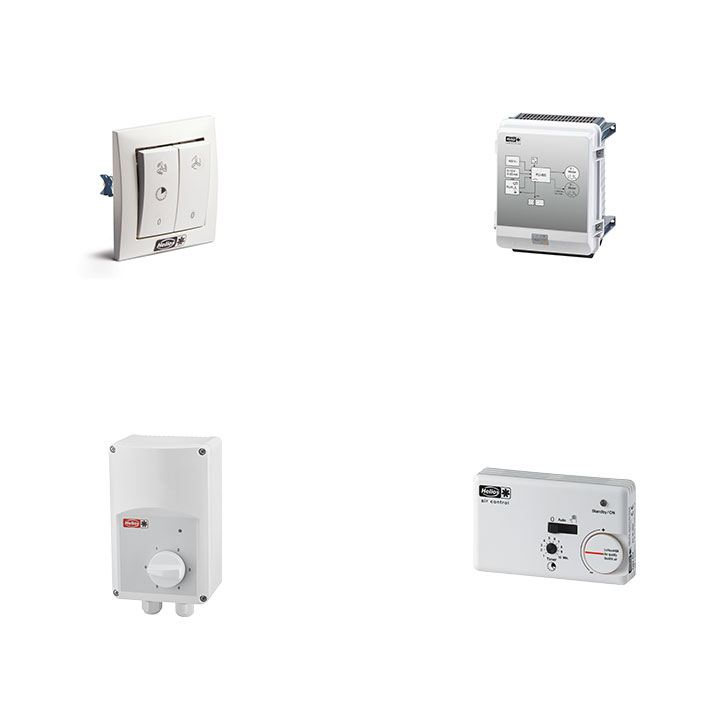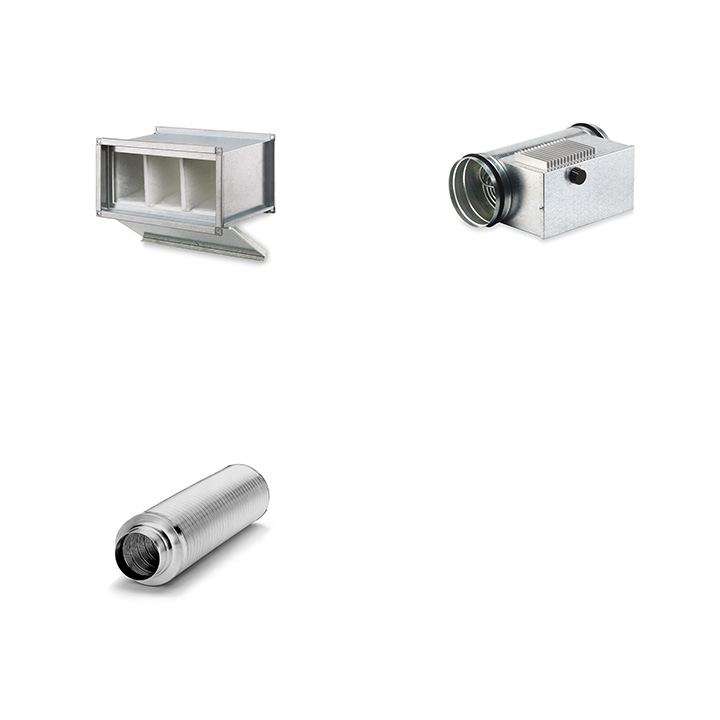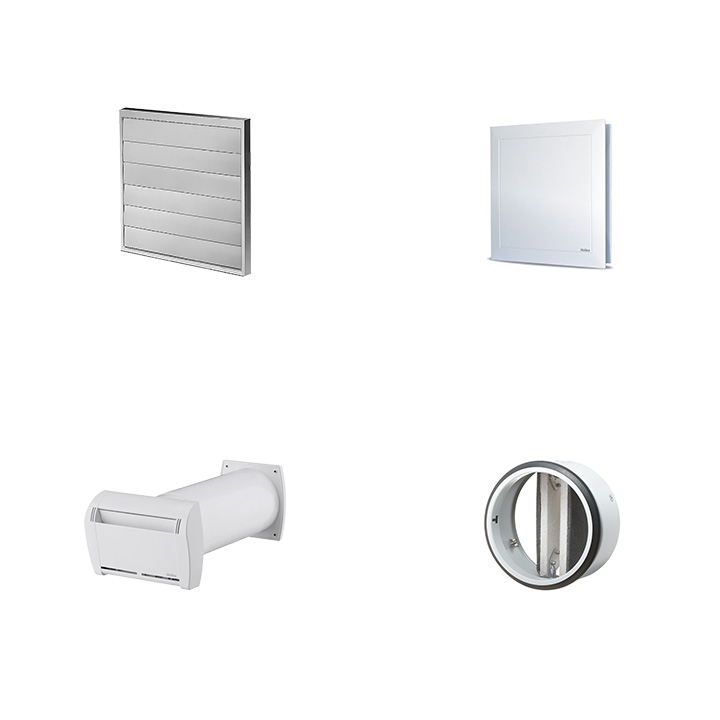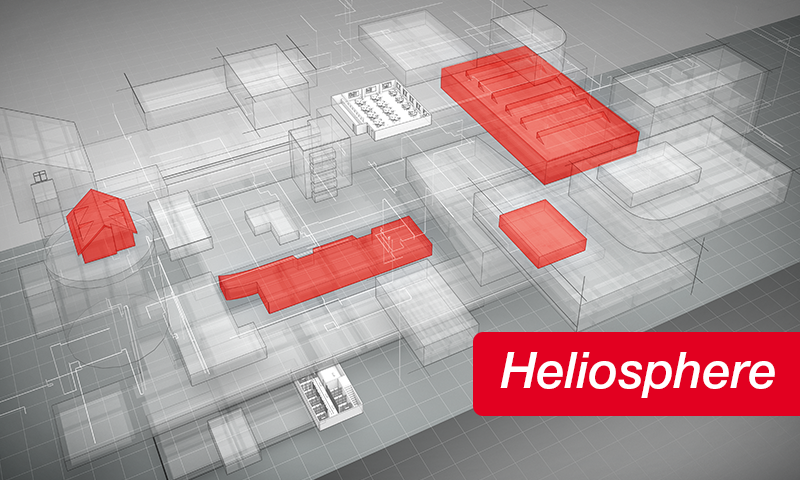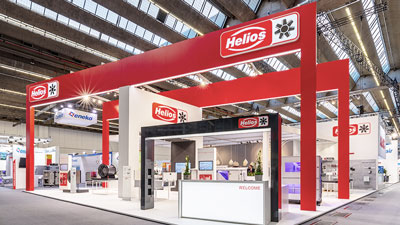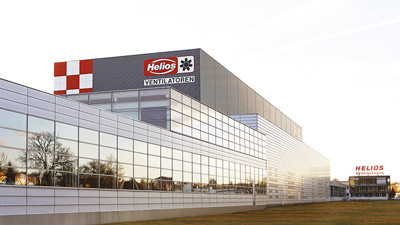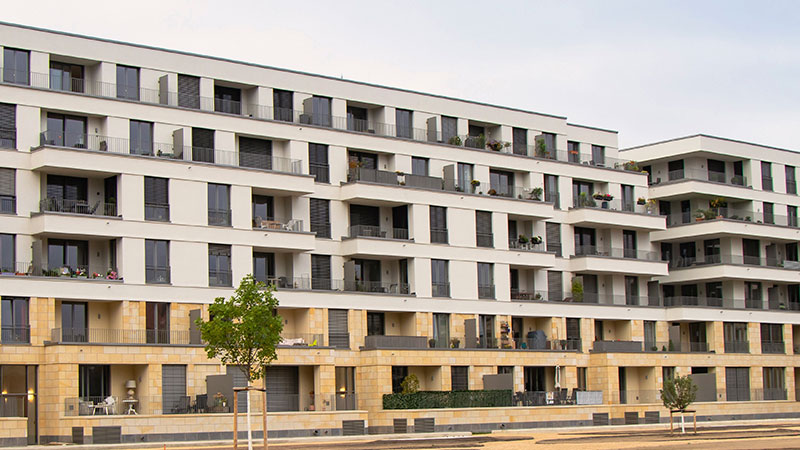
QuickFacts
Property: Building complex with residential and commercial area
Location: Dresden
Ventilation technology: Stairway flush ventilation systems
Fresh air and safety in the Herzogin Garten
The historic “Herzogin Garten” garden complex in Dresden has lied fallow since the end of World War II. It is now experiencing its renaissance after more than 70 years: Located in the centre of the old town, the 6,500 square metre Baroque garden now not only offers an inviting park area, but also a much needed living space. The nine building complexes combine over 100 apartments and several shops, restaurants and underground car parks over a total of eight floors. The resulting, different usage scenarios require the most diverse ventilation techniques. From systems for technical building equipment and ventilation systems with heat recovery through to mono tube ventilation systems – as the system provider, Helios Ventilatoren supplied the right components for every requirement and supported Dresdener Lüftungsmontagen GmbH & Co KG’s planning department with the versatile installation. In the field of technical building equipment, the focus was on the compatibility of escape routes with the fire protection requirements imposed on structures in building class 5.
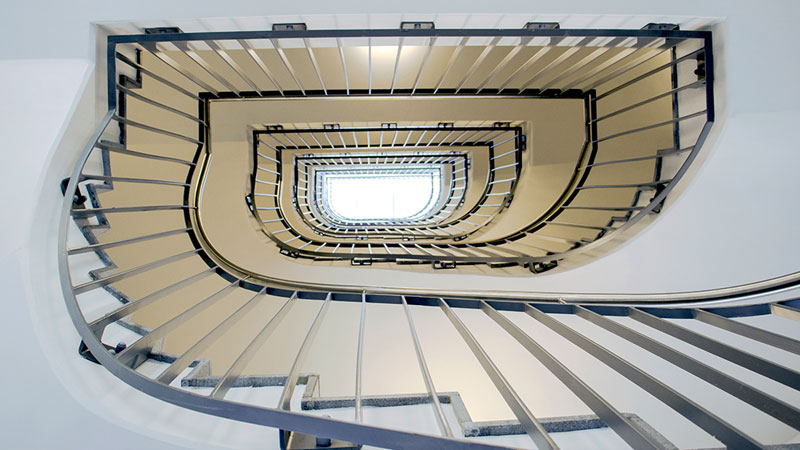
Functionality of the system technology
When smoke is detected in one of the usage units, the stairway flush ventilation system (TSA) is immediately automatically activated. The supply air fan provides fresh air throughout the stairway in a targeted manner. This dilutes any smoke gases that may have penetrated and flushes them out through the open dome light at the top of the stairway. This builds up a slight overpressure that reliably prevents the penetration of smoke through leaks between the escape route and the fire floor. In this way, the stairway can still be used as an escape route.
This streamlined system technology offers escaping persons reliable protection from dangerous smoke, particularly in buildings where a short door opening time is to be expected for the affected residential unit in the event of a fire. The building does not have a fire alarm system. The automatic system activation is realised through the smoke detectors located in the stairway access area, which are directly linked to the TSA control system. The system technology itself remains discreetly in the background in the residential building and virtually invisible for users. The supply air fan and the associated control cabinet are installed in a separate room, which serves as a TSA central unit with corresponding fire resistance. The injection point for the supply air in the stairway was placed in the basement and covered with a special screen. Monitoring is carried out by means of duct smoke detectors in the event of a fire as reliable protection against smoke entering via the intake air inlet. False triggering is reliably avoided with appropriate logic during evaluation. Nevertheless, the secure placement of the intake air inlet is essential. The supply air is supplied via the medium pressure axial fan in the TSA central unit. In the event of a fire, this delivers a volume flow in excess of 10,000 m³/h in the stairway. Furthermore, the TSA has an integrated battery backup for the complete control logic. The supply air is discharged via a dome light at the top of the stairway controlled by the TSA.
In the event of a fire, building users are alerted by multiple optical and acoustic warning systems in the stairway. Several push-button alarms are also located in the stairway for manual system activation. For example, in order to ensure that the supply ventilation of the stairway is possible in the warm summer months, the supply air fan was designed with two levels. This additional ventilation function enables ventilation of the stairway based on demand. When the ventilation function is activated, the inlet section in the basement as well as the skylight dome at the top of the stairway are opened completely.
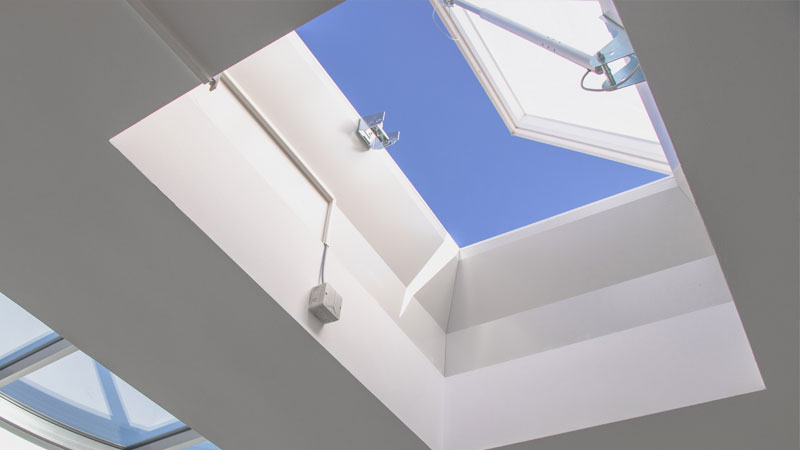
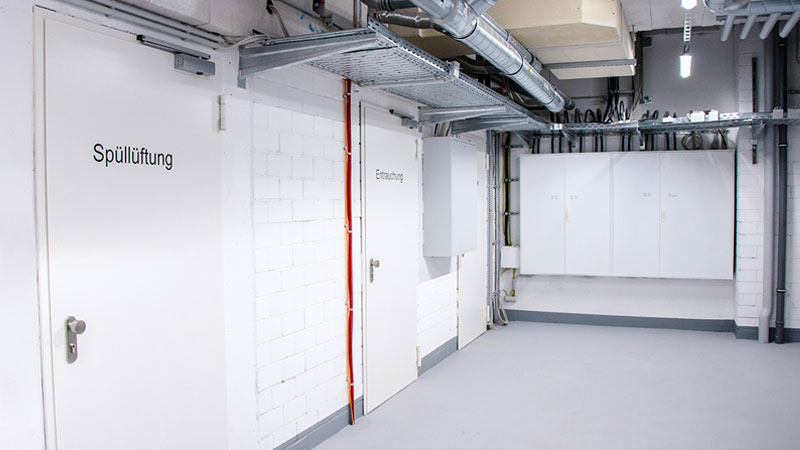
The supply air fan is operated at the low speed level and thus provides mechanical ventilation support. This results in a very low noise level in the stairway. The GSM module integrated in the control cabinet informs the operator about all system operating states in real time. This ensures that a trained person is immediately available to the users and the fire service in the event of system activation.
Summary
Classic smoke protection pressure systems are increasingly exceeding the original application of safety stairways in high-rise buildings. Smart system solutions with simple system technology, e.g. a stairway flush ventilation system, provide reliable protection for stairways in buildings below the high-rise limit. The system technology makes a valuable contribution to personal protection and combines the integral planning of structural and system fire protection with low investment and operating costs.
Images: Helios Ventilatoren
